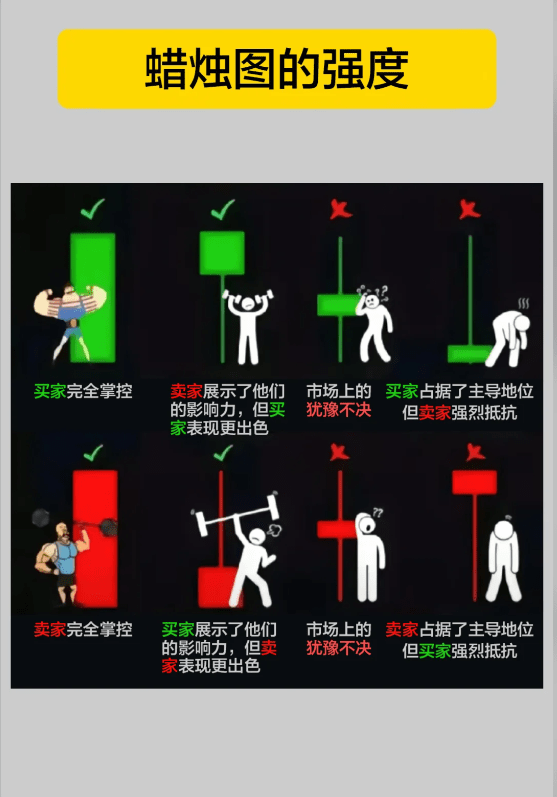In the ever-changing trading market, candlestick patterns serve as a 'barometer' of market sentiment, helping traders gain insight into changes in bullish and bearish forces. While it is impossible to achieve 'no losses ever', mastering bullish candlestick patterns can improve the accuracy of trend judgments and provide support for trading decisions.
🌟 Morning Star
A reversal signal at the end of a downtrend, composed of three candles. The first is a long bearish candle, indicating the dominance of bears; the second has a small body (can be bullish or bearish), showing hesitation between bulls and bears; the third is a strong bullish candle that closes well into the body of the first bearish candle, marking the bulls' counterattack and suggesting the potential for an upward trend, like a ray of light in the darkness.
🔨 Hammer Candlestick
Often seen at the bottom of a downtrend, characterized by a long lower shadow (approximately 2-3 times the length of the body), a small body located at the top. This shows that bears have pushed down prices, but a bullish counterattack has brought prices close to the opening price. A green hammer (bullish candle) has a stronger bullish signal, while a red hammer (bearish candle) is slightly weaker and may also indicate a reversal after subsequent confirmation.
🐂 Bullish Engulfing
In a downtrend, consisting of two candles. First appears a small bullish (or small bearish) candle, followed by a large bullish candle that completely engulfs the previous candle's body (preferably including upper and lower shadows). This indicates that bulls have overwhelmed bears, buyer enthusiasm is high, often driving prices to continue rising, which is a strong bullish signal.
⚡ Inverted Hammer
The pattern resembles a hammer, with a long upper shadow and a small body at the bottom, commonly appearing after a downtrend. It shows that bulls attempted to push prices higher; despite a pullback, initial buying interest is released. If a bullish candlestick appears later (with a closing price higher than the inverted hammer's closing price), it can confirm the shift from seller to buyer, making the reversal signal more reliable.
🎯 Piercing Pattern
Occurs in a downtrend, with the first being a long bearish candle, the second a bullish candle whose opening price is below the low of the previous bearish candle, and the closing price exceeding more than half of the previous bearish candle's body. This indicates that buyers are actively entering at low levels, showing buying pressure and suggesting a potential trend reversal.
🎖️ Three White Soldiers
Composed of three consecutive rising bullish candles, each opening price is higher than the previous closing price, and the closing prices create recent highs, with high and low points gradually rising. This reflects the continuous strengthening of bullish forces, the release of buying pressure, often seen at the end of a bear market or after consolidation, signaling a strong positive trend.
🚀 Rising Three Methods
A continuation pattern that starts with a long bullish candle, indicating strong bullish sentiment; followed by several small bearish candles, whose bodies are within the long bullish candle, showing limited bearish strength; the last strong bullish candle breaks through the high of the previous small bearish candle, signaling the bulls regaining control, and the trend continues upward.
🐉 Dragonfly Doji
Forms a doji shape with a long lower shadow, and the closing price is close to the opening price and high point. Appearing after a downtrend, it indicates that bears attempted to dominate and push down prices, but the bulls' counterattack brings prices back near the opening, suggesting that selling pressure is exhausting, and the trend may turn bullish.
🤰 Bullish Pregnancy Line
Composed of a long bearish candle and a small bullish candle, the small bullish candle's body is completely contained within the long bearish candle's body. This represents a weakening of bearish momentum, market hesitation, and that bearish forces are no longer dominant, potentially nurturing a reversal opportunity.
💭 Final Thoughts
The bullish candlestick pattern summarizes the market sentiment trajectory and reflects the tug-of-war between bulls and bears. However, it is important to note that a single pattern is not absolutely reliable and should be combined with support levels, resistance levels, trading volume, trend lines, and other comprehensive judgments. Even if the signal is clear, one must be prepared with stop-losses since market changes are unpredictable. Only by combining pattern analysis with risk control can one respond more calmly to trading situations and improve success rates.
If this content is helpful to you, feel free to share practical tips on pattern application in trading!
